Unconcerned with Genre: Lydia Millet’s Oh Pure and Radiant Heart
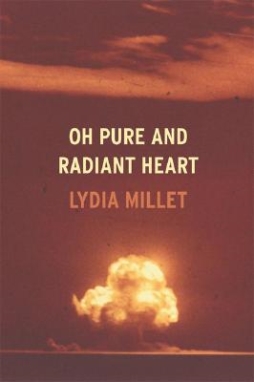 It’s not uncommon for writers of fictions called ‘literary’ to use science-fictional or fantastic elements in their work. And it’s not uncommon for sf readers to suggest that they’re using those elements wrongly, with a lack of understanding of the material they’re working with — usually, depending on the specific case, either because the writer didn’t understand the history of the way the element in question has been treated in prior (genre) works, or simply because they haven’t thought the logic of what they’re doing through in a rigorous way. Personally, I find this is rarely a problem in the fantastic ‘literary’ works that I read. And, intriguingly, when it is a problem, it’s not necessarily a significant problem.
It’s not uncommon for writers of fictions called ‘literary’ to use science-fictional or fantastic elements in their work. And it’s not uncommon for sf readers to suggest that they’re using those elements wrongly, with a lack of understanding of the material they’re working with — usually, depending on the specific case, either because the writer didn’t understand the history of the way the element in question has been treated in prior (genre) works, or simply because they haven’t thought the logic of what they’re doing through in a rigorous way. Personally, I find this is rarely a problem in the fantastic ‘literary’ works that I read. And, intriguingly, when it is a problem, it’s not necessarily a significant problem.
I recently read Lydia Millet’s 2005 novel, Oh Pure and Radiant Heart. Published and promoted as mainstream ‘literary’ fiction, it also contains speculative elements, and was nominated for the Clarke award. It’s an example of what I mean. It’s not an unflawed novel. And perhaps some of the flaws are the kinds that a writer used to genre fiction would naturally avoid. But I don’t think they’re actually critical flaws in the framework of this particular book, which has its interests elsewhere. And, ultimately, the flaws of the book are far outweighed by its successes.
The novel tells a story about Ann and Ben, a librarian and a gardener, who meet three men mysteriously reborn into the year 2003: Robert Oppenheimer, Enrico Fermi, and Leo Szilard — three men who were behind the creation of the atomic bomb. The first quarter of the book brings the cast together, and if it doesn’t explain why the scientists have manifested in the world (just as they were at the moment of the first nuclear explosion at the Trinity test site in 1945, and with no memory of anything after that point) it at least establishes that we’re not likely to get any answers. The second quarter of the book follows Ann, Ben, and the scientists as the three physicists travel to Hiroshima, trying to understand the world of the future. In the third quarter of the book, the physicists, having met an eccentric millionaire in Tokyo, begin a crusade for nuclear disarmament. The last quarter sees the crusade reach a climax with a march and violent conclusion in Washington. Although to say all this in this way shortchanges the strangeness of the book: it’s an often-wonderful piece of extravagance, that lives in a heady mix of symbolism and humanity.
The scientists all have highly-developed characters (characters which seem to agree with the relatively little I know about their historical originals), but also have a metaphorical heft that has an odd tendency to move them to the fringe of the novel. They’re drivers of events, but not the main points of interest. The book is primarily focussed on Ann and Ben, and their relationship and their childlessness and how they feel about each other and how those feelings are transformed and deformed by the presence of the scientists. Ann’s increasingly obsessed with the three men, especially Oppenheimer, while Ben’s skeptical. Millet intelligently avoids the easy route of having an affair develop, in favour of more subtle interrogations of Ann and Ben’s marriage.
The story’s told in short fragments, a few pages or paragraphs or sentences at a time, usually in a limited third-person perspective through Ann, Ben, or the scientists’ eyes. There’s also a thread of short informational passages, sequential infodumps about the three physicists’ lives and the development of nuclear weapons. Stylistically, the writing’s frequently spectacular, with tight dialogue and memorable imagery. It’s oddly difficult to find a brief passage that seems central to the book; it’s wildly discursive, filled with reflections on nature and the world and love. Here’s an example, from early on in the book, of Ann pondering to herself after waking from a dream:
Innocent and ignorant, she thought sadly, turning to lie on her back, there’s no real difference, actually we are both. Finally our ignorance consumes us, licking our backs with tongues of fire. And behind us the earth is left black.
What odd monsters will walk here after us, she wondered then, staring up.
She thought of them roaming the plains, the aftermen, their legs as tall as buildings but as thin as wire. She saw them bounding over the barren wastes like giant mosquitoes.
She wondered if they would be the leavings of men, the grandsons of robots, their veins and sinews delicate skeins of wire. Or if men had left nothing they might be the descendants of beetles and dragonflies. She tried to imagine their hearts, metal and polymer or muscle and blood.
And if there is memory, then, if there is any recollection, it is our ignorance that will be remembered, she thought. Our innocence will be forgotten, our kittens will not go down in history.
A few minutes later, restless under the sheets, she thought: Secrets have lain waiting in matter, down through the centuries.
That last reflection seems to refer back to a statement on the first page that Oppenheimer, Fermi, and Szilard “learned how to split the atom by chiseling secret runes onto rocks.” It’s a reflection on the nature of things, of matter, which ties into an appreciation for nature throughout the book, and for the interconnectedness of the things of nature and of the physical world. On the other hand you can see the countervailing obsession with apocalypse that also runs through the novel: the end of times, the end of humanity, the world without and after us. Also on the nature of the heart, as reflected in the title of the book. The imagery’s strange (“descendants of beetles and dragonflies”) and whimsical (“our kittens will not go down in history”); this matter-of-fact lyricism recurs throughout the book. As a work of prose, the book’s stunning.
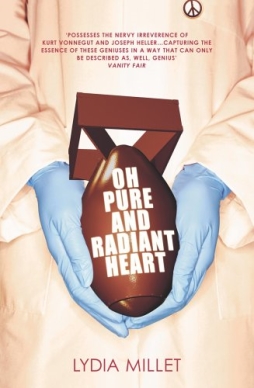 As satire, it’s scattershot. The anti-nuclear theme of the novel’s clear, but also somehow oddly distant. The focus on Ann and Ben makes the material about nuclear weaponry seem diffuse. It’s important, but also in the background. In a sense it seems that there’s nothing really to grapple with; the military-industrial complex that maintains and builds the American nuclear arsenal never has a physical presence in the book, never manifests itself enough to actually oppose, so the anti-nuclear theme can only be accepted as a necessary part of the book’s structure. In fact, the real satirical energy of the book seems to be vented on the hangers-on who become part of the crusade: burnt-out hippies, well-meaning idiots, and far-right Christian zealots who come to see the reborn Oppenheimer as an image of the Messiah.
As satire, it’s scattershot. The anti-nuclear theme of the novel’s clear, but also somehow oddly distant. The focus on Ann and Ben makes the material about nuclear weaponry seem diffuse. It’s important, but also in the background. In a sense it seems that there’s nothing really to grapple with; the military-industrial complex that maintains and builds the American nuclear arsenal never has a physical presence in the book, never manifests itself enough to actually oppose, so the anti-nuclear theme can only be accepted as a necessary part of the book’s structure. In fact, the real satirical energy of the book seems to be vented on the hangers-on who become part of the crusade: burnt-out hippies, well-meaning idiots, and far-right Christian zealots who come to see the reborn Oppenheimer as an image of the Messiah.
Still, the relative success of the book as satire is incidental to its success as speculative fiction, and indeed its success as literature. The last, and most important, of those successes seems clear to me. It’s an excellent book, well-written, with a strong sense of character. But there were a few points where I felt it was flawed, and it seemed to me that those flaws, the weakest points of the book, were also points where traditions of speculative fiction writing, of genre writing, might have helped it. On the other hand, there are also places where an excessive attention to genre structure might have hindered the invention that really helps to elevate the book.
Take the ending, for example. The climax of the novel, involving the final fate of the time-displaced scientists, seems at first blush to come out of nowhere. It’s a piece of magic, a deus-ex-machina. Which is not as bad as it sounds; the original deus-ex-machina endings were found in some of the foundational texts of Western culture. At any rate, it’s an ending that I felt worked. It’s not something foreshadowed by any plot development, but it grows naturally out of the symbols and imagery of the book — specifically, from a story about origami cranes. It would have been possible, I suppose, for Millet to come up with some plot justification for what happens at the book’s end, just as it probably would have been possible to come up with a justification for the appearance of the three scientists. She chose not to provide that rationalisation, though, and I think that’s a choice which should be respected; it tells you, in a way, how to read the book. Had she resorted to genre conventions, providing explanations for events, I think it would have made the story blander.
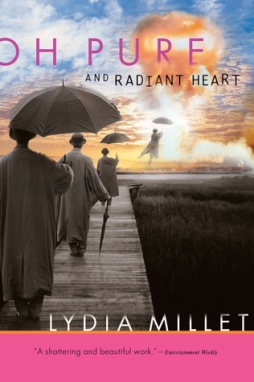 Where I do think genre traditions might have helped is in what might be called ‘worldbuilding.’ There’s a fine line between the surreal and the simply improbable. And there were parts of the book, notably in the second half, where I found myself knocked out of the story as I wondered how certain things could actually happen. Generally, as the crusade grows, as more and more people pay attention to the scientists and their march to Washington, the story becomes harder to accept. Or, to put it another way, it raises questions of the wrong kind.
Where I do think genre traditions might have helped is in what might be called ‘worldbuilding.’ There’s a fine line between the surreal and the simply improbable. And there were parts of the book, notably in the second half, where I found myself knocked out of the story as I wondered how certain things could actually happen. Generally, as the crusade grows, as more and more people pay attention to the scientists and their march to Washington, the story becomes harder to accept. Or, to put it another way, it raises questions of the wrong kind.
It is true that the development of the movement is not the book’s central concern. Szilard is the prime mover of the politics and the development of his campaign, but we see things mainly through Ann and Ben. We don’t follow him through his court cases and his growing sophistication about early-twenty-first-century media. If it seems unlikely, if events suddenly just happen to Ann and Ben, that’s fine; we understand that the instigation of those events is not the point of the novel, and we can easily imagine answers to all the questions left unstated.
But much of the fourth part of the book deals with the campaign being usurped by Evangelical radicals who believe in an imminent apocalypse. That fits perfectly with the themes of the book. The problem is that it’s also clear that among the Evangelicals are heavily-armed members of what seems to be a private militia — and, despite that fact, they managed to gain permits to walk, armed, in a parade through Washington, DC. Unsurprisingly, violence breaks out. Things swiftly become appropriately chaotic, but the result still seems underplayed: you can’t help but think there’d have been more oversight of the march if it was allowed at all, more preparation from authorities. To me, the sense of how the unreal phenomenon of the movement fit into the real-world setting was undermined because the real-world felt improbable.
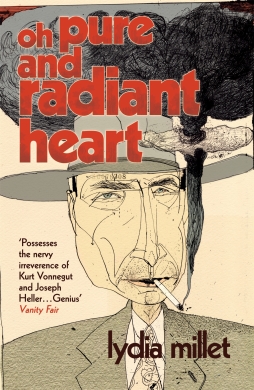 Similarly, I thought the presence of the press on the campaign, the power of the media to deform events just by their presence, was underplayed. This isn’t a book about the power of media, but I found myself missing some explanation for the absence of media (online or offline) within the story. Particularly when confirmation of the identity of the scientists comes about due to a matching DNA test, the ramifications seemed underexplored. Three dead men had been restored to life. You’d think a few people would have questions about that. Again, this felt like a failure of worldbuilding; or, to rephrase slightly, a failure to conceive of the world in depth enough to both make the parts of the story that required credibility feel credible, and to find new ways to extend the themes of the story as a whole. It’s not a fatal weakness, because the book doesn’t rely on this sort of plausibility. But I do think it is a weakness nevertheless.
Similarly, I thought the presence of the press on the campaign, the power of the media to deform events just by their presence, was underplayed. This isn’t a book about the power of media, but I found myself missing some explanation for the absence of media (online or offline) within the story. Particularly when confirmation of the identity of the scientists comes about due to a matching DNA test, the ramifications seemed underexplored. Three dead men had been restored to life. You’d think a few people would have questions about that. Again, this felt like a failure of worldbuilding; or, to rephrase slightly, a failure to conceive of the world in depth enough to both make the parts of the story that required credibility feel credible, and to find new ways to extend the themes of the story as a whole. It’s not a fatal weakness, because the book doesn’t rely on this sort of plausibility. But I do think it is a weakness nevertheless.
It’s also notable that the three scientists themselves seemed relatively unaffected by the proof of who they were. That’s a symptom also of a certain lack of curiosity in their characters: they are, on the whole, not especially interested in how they come to be in the future. They’re also not especially interested in science, or in catching up with the new discoveries of past decades. There’s some mention, particularly in the book’s first quarter, of the three men reading about the new science, but that thread’s dropped as the book proceeds. Add to this that they seem less discomfited than they perhaps ought to be by shifting societal attitudes, especially with respect to things like race and gender. These things aren’t ignored, but they do feel underplayed.
You can assume, I suppose, that whatever force brought them back also shaped their thinking or affected their curiosity about the world. But that’s quite an assumption to make, lacking any real support in the text. Any way you slice things, it seems to me, the depiction of the timelost physicists moves away from credible, novelistic character to something flatter; something perhaps more convenient for the themes of the book, and the way the story unfolds. I find this fascinating because in a sense these men represent the classic sf trope of the scientist-as-hero. They are Competent Men, in the John W. Campbell tradition. At least in theory. As the book goes on they become less so, less focused on the hard science of the world about them. Their certainties become dissolved in politics, in madness, in internalised vision.
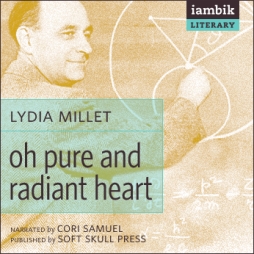 And yet perhaps that is in a sense what speculative fiction is ultimately about: the pursuit of the visionary at the expense of the realistic and quotidian. Building up those three characters as more historically-credible scientists would not necessarily make a better book. We’re watching them change from one thing to another. We’re seeing men living lives after their deaths. It is literally the case that the scientist-as-hero is insufficient here, is out of place. They must become other than what they actually were. They duly become stranger, deeper, more purely fictional creations, fitting into archetypal patterns of betrayal and sacrifice and withdrawal from the world.
And yet perhaps that is in a sense what speculative fiction is ultimately about: the pursuit of the visionary at the expense of the realistic and quotidian. Building up those three characters as more historically-credible scientists would not necessarily make a better book. We’re watching them change from one thing to another. We’re seeing men living lives after their deaths. It is literally the case that the scientist-as-hero is insufficient here, is out of place. They must become other than what they actually were. They duly become stranger, deeper, more purely fictional creations, fitting into archetypal patterns of betrayal and sacrifice and withdrawal from the world.
Overall, within the structure of the novel, within the pattern of what it wants to do, the depiction of the scientists works. I’d say most of the things that might be problems in other contexts, specifically within genre contexts, work here because the interests of the book lie in other places. If these things are problems, they’re not problems crucial to the structure of the novel, which is only incidentally about the effect of the scientists on the world. Arguably, the book is only incidentally about the bomb. It seems to me much more to do with love and nature and what binds us all.
The point is that the problems of the book not only are minor next to its successes, they’re not key problems. There may be books brought down by a lack of attention to genre concerns, but not this one. And, to me, most of the time the ambitions of the fictions called ‘literary’ — a kind of fiction in fact perhaps best defined by the presence of those ambitions — are different than the ambitions of speculative fiction. There may be points of alignment. But these concerns are different enough, the books are weighted in such different places, that frequently a failure from one perspective is irrelevant in terms of a book’s overall aspiration. The fact that the novel isn’t a part of genre, and doesn’t aspire to be part of genre, makes its issues with genre traditions and genre-oriented craftsmanship largely irrelevant. There may be other books where that craftsmanship touches on such core issues of structure that the book’s weakened, but I think that’s unusual, and probably speaks to a larger failure of vision. There’s none of that here.
Matthew David Surridge is the author of “The Word of Azrael,” from Black Gate 14. His ongoing web serial is The Fell Gard Codices. You can find him on Facebook, or follow his Twitter account, Fell_Gard.
[…] Unconcerned with Genre: Lydia Millet’s Oh Pure and Radiant Heart […]